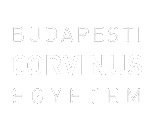Antal, Zsuzsanna and Dobák, Miklós and Vaszkun, Balázs (2012) Tradicionális versus innovatív társaságirányítási és szervezeti formák ----- It's title in English: Traditional versus Innovative Forms of Corporate Governance and Organizations. Műhelytanulmány (working paper). Vállalatgazdaságtan Intézet, Budapest.
|
PDF
- Requires a PDF viewer such as GSview, Xpdf or Adobe Acrobat Reader
783kB |
Absztrakt (kivonat)
Absztrakt: Jelen tanulmány a 2009-es Versenyképességkutatás kérdőíves felmérés bázisán arra a kérdésre keresi a választ, hogy az elmúlt közel 20 évben a magyar vállalatok strukturális alkalmazkodása hogyan változott. A változás kettős értelmben értendő: egyrészt arra utal, hogy vajon az évtizedek óta domináns funkcionális szervezeti forma hegemóniája töretlenül jellemzi-e a vállalatokat, illetve arra, hogy a választott szervezeti modellek célszerűen képesek-e támogatni a vállalatok működését, végső soron hozzá tudnak-e járulni versenyképességükhöz. Kérdéseinkre a strukturális kontingenciaelmélet összefüggésrendszerére, és kutatási eredményeire támaszkodva kísérlünk meg választ adni. Tanulmányunk első részében bemutatjuk a kontingencialista kutatások eddigi eredményeit és általunk használt kutatási modelljét, valamint áttekintjük a magyar vállalatfejlődés elmúlt évtizedeit – beleértve a rendszerváltás előtti évtizedeket is. Ezen korszak egyetlen használatos modellje, a funkcionális struktúra, úgy tűnik, mélyebben határozza meg jelenünket kulturálisan, mint azok a szakmai szükségszerűségek, amelyek innovatívabb, rugalmasabb, decentralizáltabb modelleket igényelnének hazai vállalatainktól. Tanulmányunk második részében pedig a legfrissebb adatfelvétel eredményeit foglaljuk össze néhány olyan új elemzési irányt is beleértve, amelyek a korábbi adatfelvételek során nem voltak kutatásaink fókuszában. Az adatok szerint ugyan folyamatos csökkenést mutat a funkcionális modell alkalmazása és ezzel egyidejűleg folyamatos növekedéssel jellemezhető a divizionális struktúra alkalmazása, végeredményben a vizsgált vállalatok legnagyobb arányban a funkcionális szervezeti modellt alkalmazzák még ma is. Magyarázatként erre a viszonylag homogén alaptevékenység, valamint a kis- és középes vállalati méret szolgálhat. Azonban a formális stratégia hiánya, a vállalatok jellemzően lokális piacokra való koncentrálása, a vezetők centralizációs hajlama, a funkcionális forma évtizedek alatt bejáratott volta továbbra is kérdésessé teszi, hogy a vállalatok strukturális alkalmazkodása mennyire követi a célszerűség, a külső és belső illeszkedés logikáját, illetve mennyiben inkább a stratégiai választás azon logikájára épül, amely a meglévő rendszerek fenntartását szolgálják. ----- Abstract: This paper examines the competence of structural adaptation and its evolution during the past two decades in Hungarian companies. The background of analysis has been provided by the 2009 Competitiveness Study carried out by Corvinus University research groups. Our perspective is twofold: on one hand, our aim has been to have a feedback whether the classical U-form structure is still the dominant form of organization in Hungary, as it has been for decades now. On the other hand, we wanted to verify whether the chosen organizational form of Hungarian firms can effectively support their competitiveness. In order to answer these questions, we have built our analysis on the contingency theory and the findings of our field study. The first part of this paper expounds the previous researches based on contingency theory and presents our theoretical model. We briefly describe how management in Hungarian companies developed during the past decades, including the Communist regime. We assume that the dominant structural form of this historical period, the U-form or functional way of organizing culturally shapes our present as well; and this impact seems to be even deeper than the one of the actual environment of our companies which ought to require more flexible or more decentralized organizational structures. In the second part, we resume the findings of the last questionnaire survey and develop new research directions which the previous analyses did not deal with. Research data shows that our companies adopt the M-form structure on a continuously enlarging scale. Consequently, the supra-dominance of the classical U-form seems to be fading, yet it still appears as the dominant form in the responding companies. One of the reasons for this phenomenon can be the relative homogeneity of their businesses (the major part of their income coming from one or two business lines maximum), or their relative small size. Yet, the lack of formal strategy, their focus on merely local markets and the centralizing attitude of Hungarian managers, along with the historical past and its structural heritance, make it questionable whether the choice of organizational form in Hungarian firms follows a pragmatic rational of fit with the environment. It can be that the logic of structural choice is determined by the will of maintaining existing patterns rather than adopting new ones.
| Tétel típus: | Monográfia, jelentés (Műhelytanulmány (working paper)) |
|---|---|
| Kulcsszavak: | Kulcsszavak: Versenyképesség, Szervezeti formák, Strukturális alkalmazkodás ----- Keywords: Competitiveness, Organizational Forms, Structural Fit |
| Témakör: | Vállalati szervezet |
| Azonosító kód: | 375 |
| Feltöltő: | Krisztina Kulcsár |
| Elhelyezés dátuma: | 31 Máj 2012 10:05 |
| Utolsó változtatás: | 01 Júl 2016 04:05 |
Csak a repozitórium munkatársainak: tétel módosító lap

